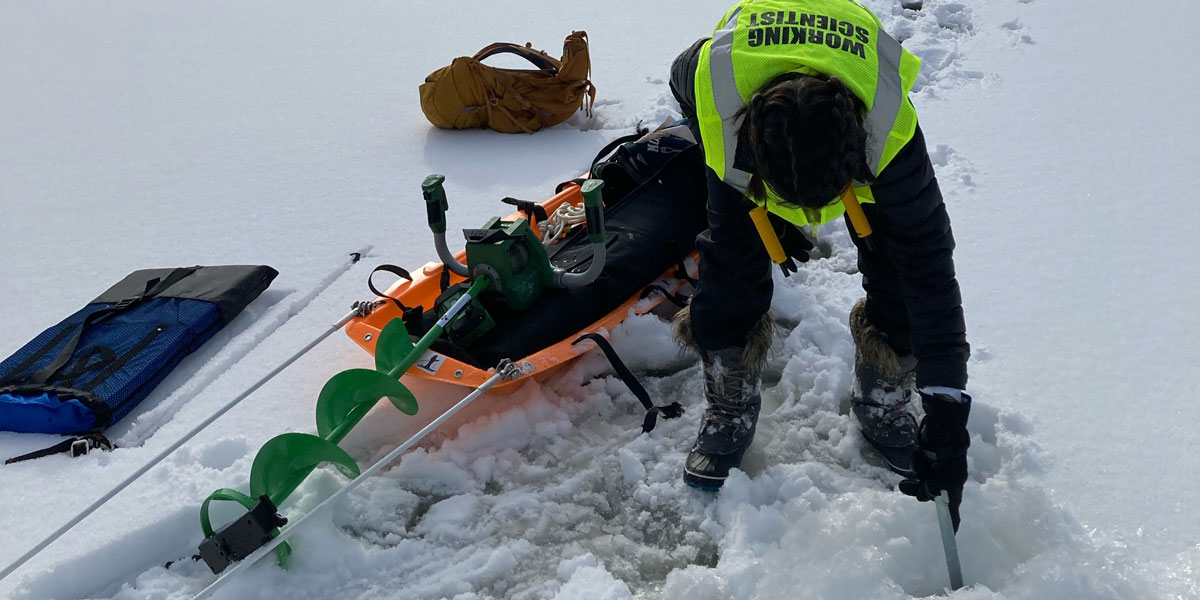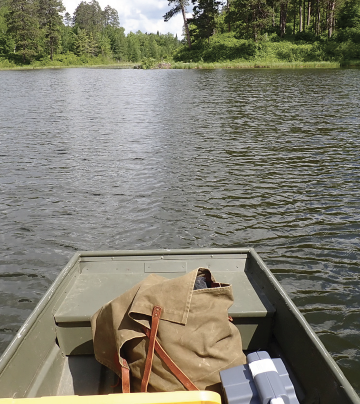
This trait brought Betsy Swanner, an associate professor at Iowa State University, to Itasca. Now a frequent visitor, Swanner recently received a National Science Foundation (NSF) grant in the Faculty Early Career Development Program (CAREER), to continue research up north. The research team will spend most of their time visiting lakes a few miles from the station, including Deming, Budd, Arco and Josephine. These iron-rich lakes are thought to be meromictic, which means they don’t mix seasonally from top to bottom.
Because of their stratified layers, the biogeochemistry of the lakes resembles iron-rich oceans from 500 million years ago. As part of the grant, Swanner aims to disentangle how carbon and oxygen move through the system and sort out what microbes are involved. The lakes might be bigger contributors to greenhouse gas emissions than previously thought.

From the lake’s surface, their unique chemical signature and stratified layers aren’t noticeable. A different reality unfolds below. “When oxygen levels decrease, things get weird,” says Swanner. “As you get into the zone that transitions from high oxygen to low oxygen, there are hardly any fish and a ple thora of unique microbes.”
These low-oxygen layers are hot spots for microbial diversity, including for microbes that release oxygen and others — known as methanogens — that require a low-oxygen environment. They’re at odds with each other. Researchers hope to identify the oxygen-producing organisms, and sort out how much oxygen they release in the iron-rich system.
Oxygen levels dictate how active methanogens can be. Methanogens, as the name suggests, produce methane by decomposing organic products, like leaf litter. Methane is a potent greenhouse gas, and lakes and wetlands add a significant portion of methane into the atmosphere annually.
Higher iron levels might promote methane production by reducing oxygen levels. This interests Swanner because although a handful of lakes wouldn’t make a big difference in global methane emissions, if these iron-rich meromictic lakes are widespread, they might. Documenting the balance of oxygen and methane production will paint a clearer picture of ancient oceans and in these lakes today.
The number of meromictic lakes might be on the rise because of human activity. “Road salt runoff is a big contributor to this,” says Swanner. “Because of this, we think the estimate of iron-rich meromictic lakes in the upper Midwest and beyond is low.” If iron-rich meromictic lakes are more common than scientists think, this could have a number of consequences, including for lake managers.
Swanner’s lab will visit the station a couple of times a year. Whether donning a lifejacket and climbing into a boat or wearing a parka and strapping on snowshoes, they’ll be out sampling microbial life of these lakes and estimating their contributions to greenhouse gas emissions. —Claire Wilson
(top image) Betsy Swanner takes an ice core to collect winter samples at Budd Lake.
This article appeared in Upstream Spring 2021, a regular publication of Itasca Biological Station & Laboratories.